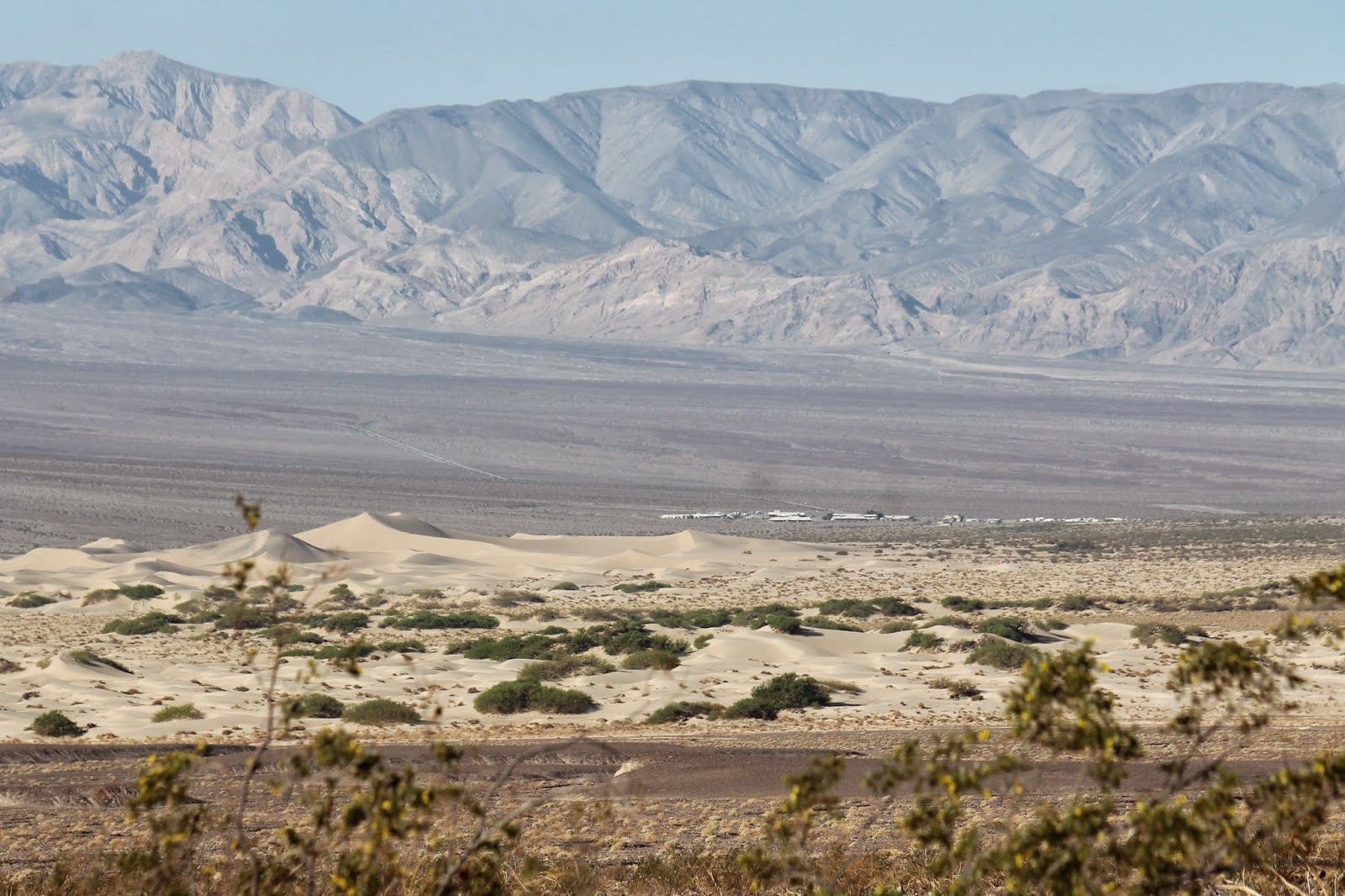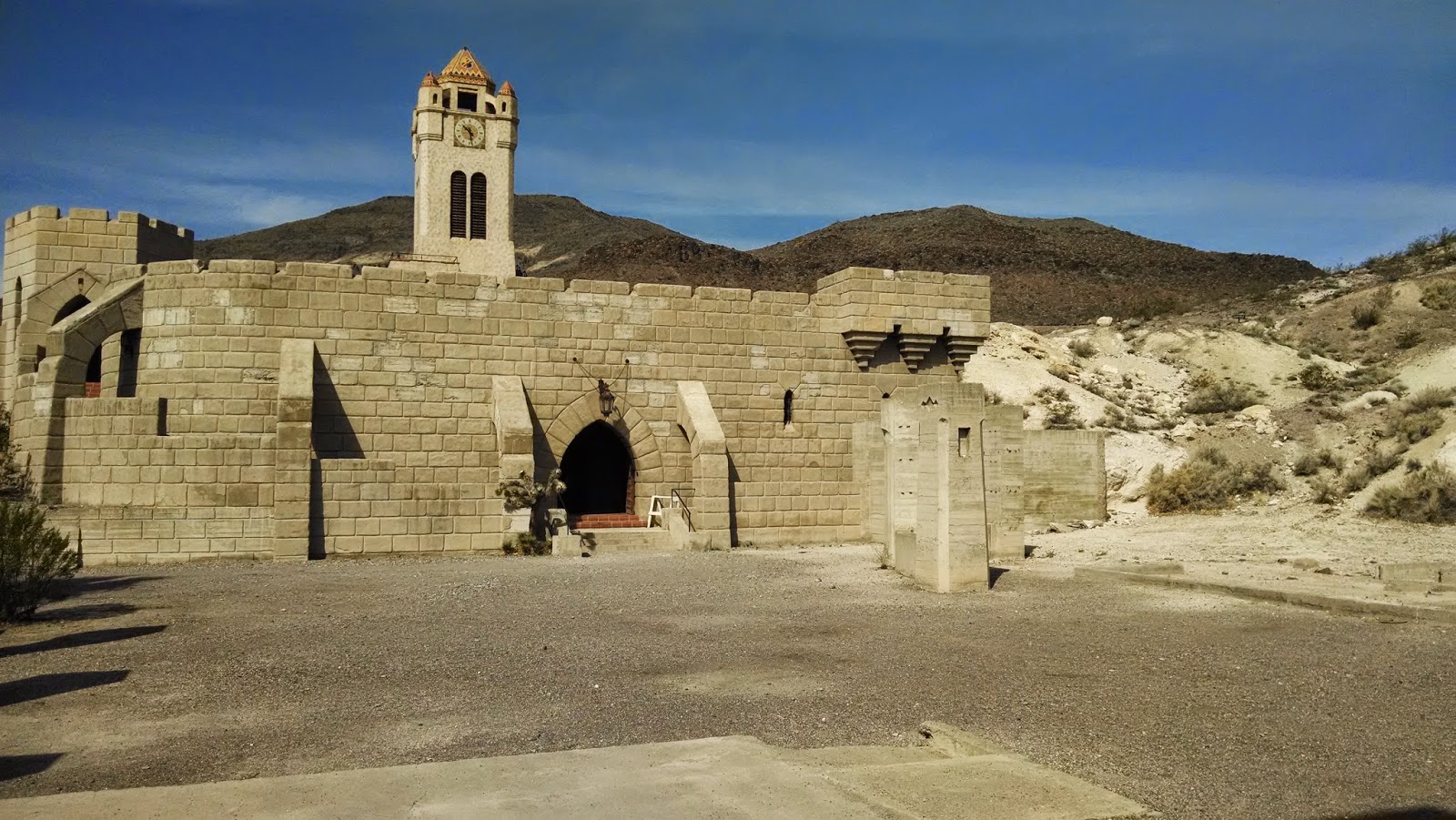I was surprised to find out that Death Valley was not made a national park until 1994. Before that it was a national monument, which didn’t give it the same level of protection. Mining had been going on in DV since the early 1800’s and there are thousands of mine shafts in the park. Modern intensive mining was starting to take a toll on DV until it was better regulated and now it is essentially stopped. We visited four remnants of the mining period: Rhyolite, Leadsfield, Harmony Borax works and the Eureka gold mine.
 |
| Rhyolite was founded in 1904 and became a boomtown with thousands of residents and two banks. This is one of the bank buildings. |
 |
| Rhyolite general store |
 |
| Mill for processing gold ore at the Eureka mine. This mine operated until 1945 and produced an estimated $175,000 worth of gold (at $20 per oz. at the time) for the man who owned it. Ironically he lived his whole life in a place where there was nowhere to spend his wealth! |
 |
| Eureka mine entrance |

In the 1920’s, some of the mining companies were visionary enough to realize that tourism would become the true gold of Death Valley. Two competing lodges were opened, Stovepipe Wells and Furnace Creek Inn and Ranch. They are still the main places to stay in the park either under a roof or in a tent. We camped at both.
 |
| We stayed at the settlement you see in the middle of this picture--Stovepipe Wells, founded in 1926. The owner built his own toll road into the valley for tourists. |
 |
| Rangers in 30's period costumes give tours of the site |
 |
| The interior was decorated in Spanish style with no real concern for cost. Before the Depression, the owners' income was over $1 million per year. |




No comments:
Post a Comment